Juliet Crew
All-woman firefighting team tests mettle
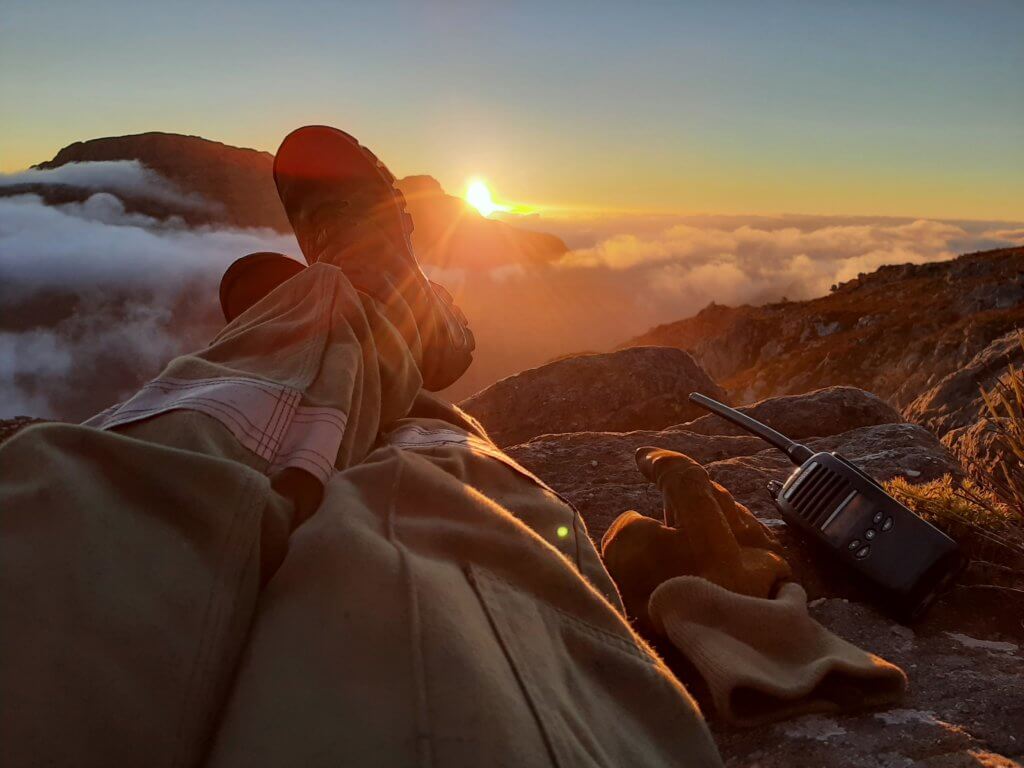
Photo by Kylie Paul
My name is Kylie Paul, and I am the superintendent of Juliet Crew, the first and only all-women wildland firefighting crew in South Africa.
Juliet Crew was built on the dreams of Dean Ferrier, managing director of NCC Environmental Services, who recognizes that in greater South Africa, women are not well represented in private-sector wildland fire fighting.
NCC is working to bring more women into wildland fire fighting while also providing opportunities and training to vulnerable youth and previously disadvantaged women.
“Over time,” Ferreira says, “they will stand shoulder to shoulder – not male or female firefighters, just firefighters in green and yellow.”
Ferreira approached me, a volunteer firefighter, in 2019 and asked me to help him achieve this dream.
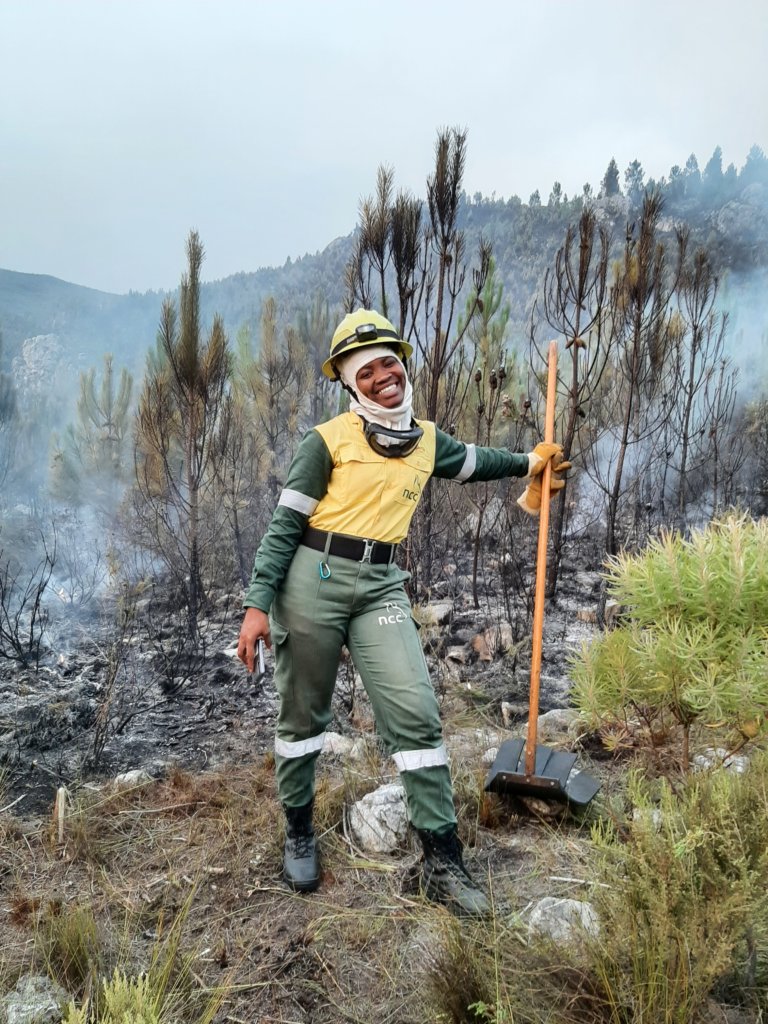
Photo by Kylie Paul
While NCC is supporting the crew by providing salaries, management support, training and a temporary fire base, the crew is not currently contracted and needs to raise funds from public and private entities to keep this project and dream sustainable. The majority of the crew members are the breadwinners for their families and two are single mothers. Juliet Crew has had incredible support so far and are feeling optimistic about our future. The name Juliet was selected by the crew as it is the only female moniker in the phonetic alphabet.
Between Feb. 21 and March 3, the Western Cape of South Africa experienced a large wildfire in the Overberg and Cape Winelands District Municipalities. Firefighting conditions were very difficult and took place in inaccessible areas. Extreme temperatures, tough and steep terrain coupled with strong winds further hampered our efforts. The blaze, which started in Grabouw, burned approximately 14,000 hectares (34,600 acres) of mountainous areas. Fortunately, no improved properties were damaged, and no lives were lost, however in areas, young vegetation was burned at too high a temperature, and that may have severe ecological impacts.
Juliet Crew was deployed over three separate operational periods, each a minimum of 24 hours. The crew was trooped into the fire by both the South African National Defense Force (SANDF) Oryx and Leading Edge Aviation – South Africa’s Huey provider. For most of the crew this was their first time flying. Most had never even been in an airplane.
The Western Cape fire season had been fairly quiet before this fire, so Juliet crew members were chomping at the bit to get their boots dirty and do the job we love. Our deployments ranged from direct attack and strategically using the terrain to our advantage to suppress long and large fire lines, to mopping up and observing. No matter what assignment was handed to us, the crew was up for the task.
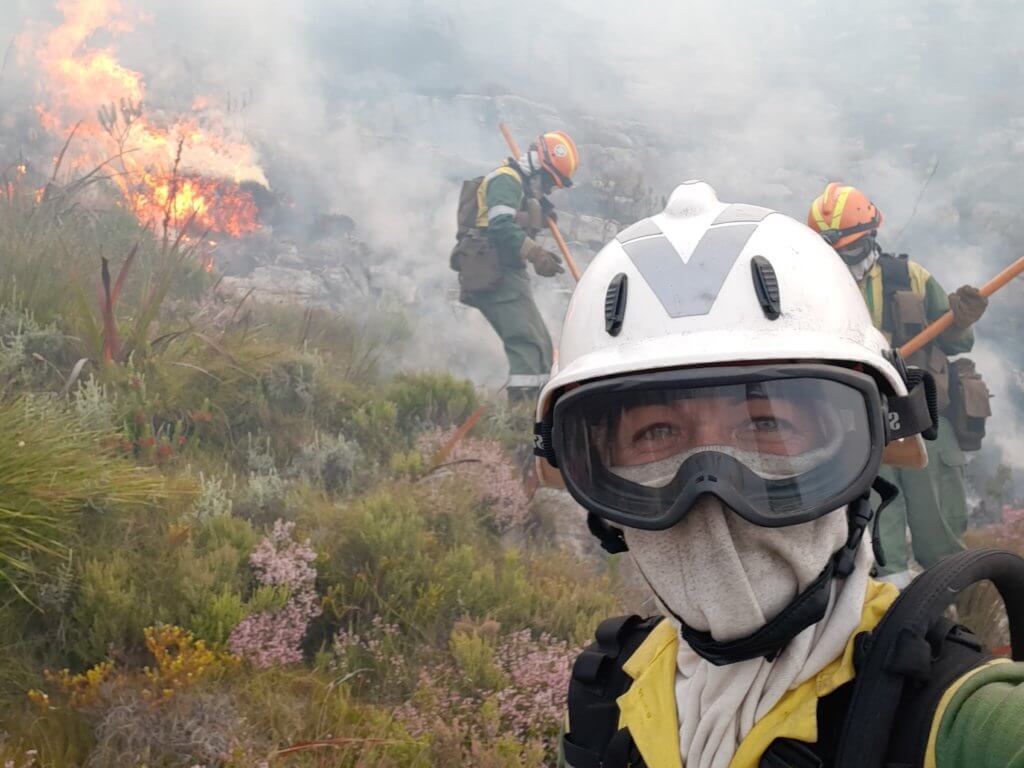
Our second deployment was tricky as the conditions in the mountain were very different from the information we had received on the ground. The fire was burning in multiple areas, with different agencies spread across the Jonkershoek and Banhoek valleys. The crew was dropped in the middle of an active line and immediately started digging a fuel break to anchor the crew, followed by quick action to start beating out the line; this is done by having our fire beaters (flappers/swatters) up front working in unison to hit the flames down, followed by crew members with Mcleod rake hoes to scratch a line and mop up any active flames or hot spots, ensuring no flames sneak up behind us, or should there be a wind shift, that we don’t lose all of our hard work.
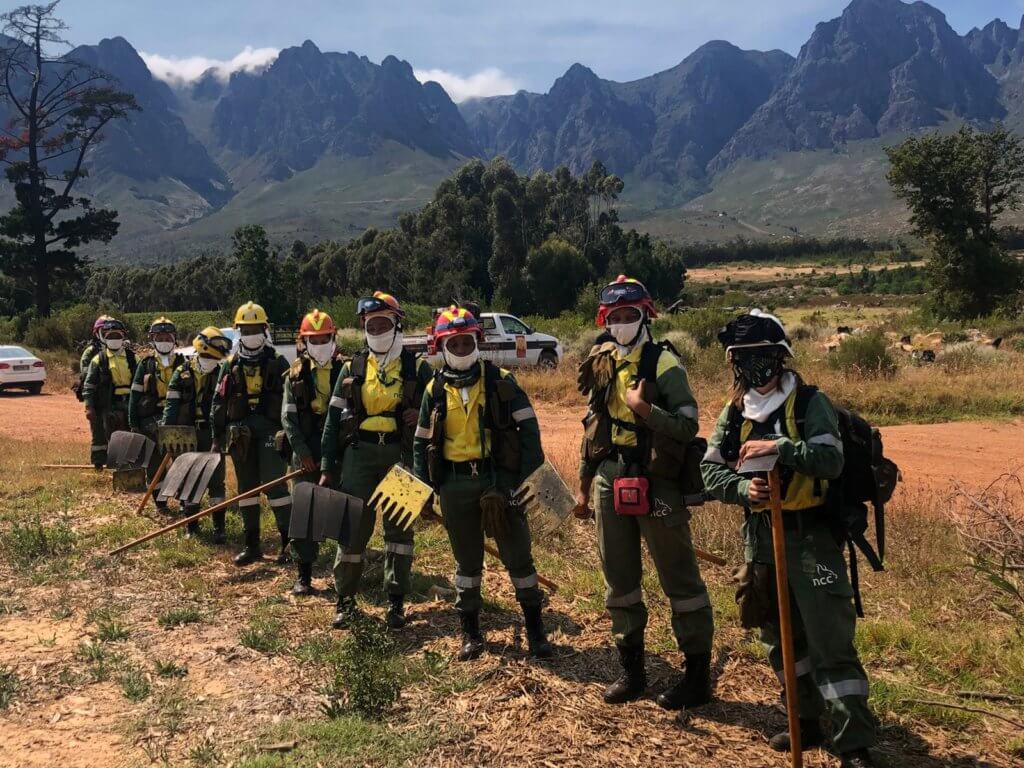
Once anchored, the entire crew beat out the steepish fire line for about 700 metres (766 yards) before being met with a blind valley that twisted in the direction of two peaks and Lourensford Wine Farm. The vegetation, a mix of restios – a reed-like grass, young pine and proteas, was very tall, and the ground disappeared into a marshy wetland/stream. If we lost this section, we would lose our entire line and have to contend with three new ones. As we were the only crew deployed to this division, we had to call for aerial assistance. We simply could not cut a break with the tools within the timeframe we had. Enter the Oryx. We received 10 drops of around two tons (2,000 liters / 530 gallons) of water per drop on this section and were able to engage and catch it just in time.
We proceeded to contain the entire line, which extended to about one kilometre. Our objective was to continue into the next valley to work a new line, but the weather conditions had deteriorated so badly that we were met with an inferno. The crew sought refuge in our safety zone, while myself and our division supervisor analyzed the situation. Crew members made their way down to the valley behind us to attempt to engage with an active line funneling through the valley, but after reassessing the conditions, and with an approaching wind shift, it was deemed too dangerous. We had no way of escaping if the wind turned, as predicted.
We returned to our safety zone and were met with the anticipated wind shift. The shift was more pronounced than expected due to local conditions created by the terrain and fire itself. The fire moved up the steep unburned valley toward us in seconds. We moved deeper into our safety zone (the black) and lay low down to try to weather the choking smoke, embers and ferocious wind. This was the moment when I realized that these women around me are warriors, that even though I believed in them, and was incredibly proud of all they had achieved up and until that point, this was it. These types of moments define whether this is the job for you. Crew members started chanting “only the brave,” in deference to the 2019 movie based on the true story of the 19 members of the Granite Mountain Hotshots who died in the Yarnell Hill fire in Arizona in 2013, and the lessons learned from it. The chant was to honor those who had fallen, but also to celebrate those who have risen in a moment when the human instinct is to panic and run away from uncomfortable and dangerous situations.
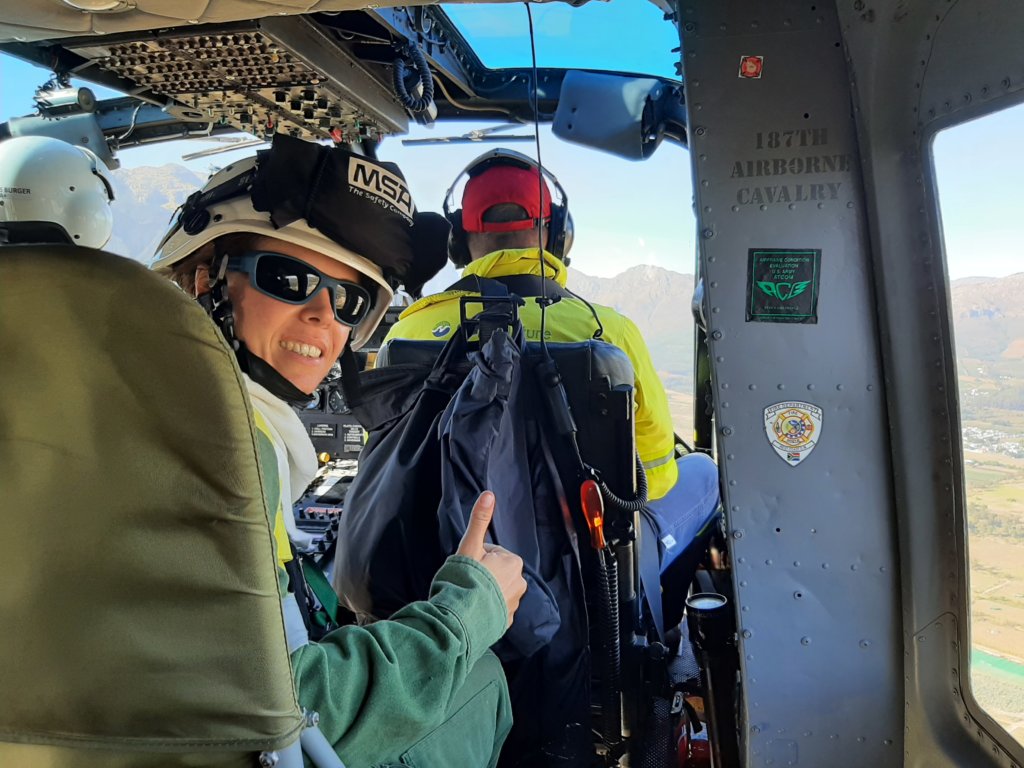
Crew members didn’t move until instructed to do so, and when they stood up, they seemed taller. They seemed more unified. They suddenly took up more room on the top of that mountain. Similar to the proverbial phoenix rising from the ashes, crew members stood up not as female firefighters, but as firefighters.
Once the conditions allowed, we sought a place of refuge for the remainder of the night, as the conditions were too dangerous to continue working. Winds raged at 80 to 100 kilometers an hour (50 to 62 mph), and thick mist started to move in. It was impossible to differentiate between the mist and smoke. We huddled together in between some boulders, and faced a long, cold night. As soon as the wind died down to about 40 km/h (25 mph) we were able to make a small fire to get through the last cold hours of the morning. At first light we began the five-hour hike out. We were met with another active line on our way out, which we were able to push into some rocks on a cliff; it was later contained and mopped up by our replacement crew.
Sore and tired, I watched my crew walk off the line with smiles on their exhausted-looking faces. For two members this had been their fourth deployment ever. It felt like we had all changed in some way, for the better. We were most certainly closer than ever before as crew, but there was something else – I could not place it in that moment. During our crew debrief it hit me like an Oryx water drop: the women beside me believed in themselves as firefighters – they were beyond the self-doubt that society has placed on them. The question initially was, can women do this job? The answer: yes, hell yes we can!
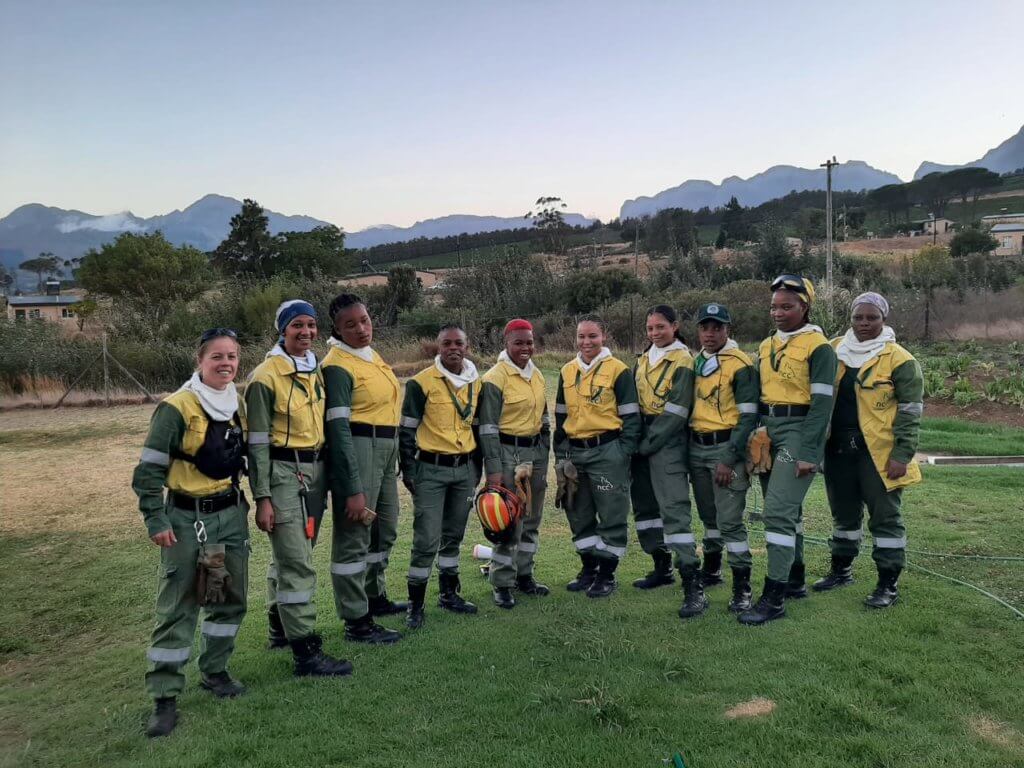
Juliet Crew members (left) Kylie Paul, Tarren January, Yanga Yoywana, Zimasa Khana, Anathi Galada, Kaylin Davidson, Sharne Maritz, Breezo Thozama, Buhle Tebekwana and Vuyiseka Arendse before departing for their third and final deployment on the Jonkershoek fire.
Photo by Alistair Burt
ABOUT THE AUTHOR
Kylie Paul is a former teacher who also has an environmental management degree. She moved to Cape Town from Pretoria to work with fynbos, South Africa’s unique vegetation that makes up 80 per cent of the Cape Floral Kingdom. Paul was headhunted from Volunteer Wildfire Services by NCC to establish the all-female crew in 2019.
